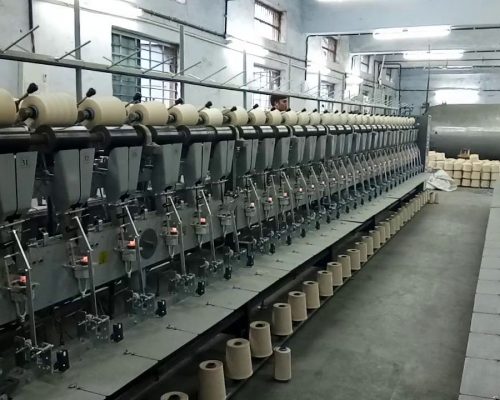Project Report For Yarn Gassing Machine
Introduction
Project Report for Yarn Gassing Machine is as follows.
A yarn gassing machine is a device used in the textile industry to produce yarn from raw materials such as cotton or wool. The machine works by drawing the fibers through a series of rollers, which twist and turn the fibers into yarn. The yarn is then wound onto bobbins or cones for further processing.
There are several types of yarn gassing machines available in the market, including ring spinning, open-end spinning, and air-jet spinning machines. Ring spinning machines are the most widely used machines in India and are suitable for producing high-quality yarn. Open-end spinning machines are used for producing large quantities of yarn quickly, while air-jet spinning machines are used for producing fine yarns.
At the yarn stage, singeing is also carried out. For yarn singeing is a procedure used to get rid of yarn hairiness. A package-to-package winder and a gas hob make up the singeing system. The flame is passed over the yarn, singeing the strands that stick out and give the fabric its hairy appearance. It moves between 400 and 1000 metres per minute. The machine must maintain a consistent machine speed and an even flame in order to achieve even singeing.

Benefits of Yarn Gassing Machine
The textile industry has benefited greatly from the yarn gassing equipment. The employment of machines has enhanced efficiency and productivity, resulting in a reduction in manufacturing costs. As a result, the textile business has become more competitive, both domestically and internationally. Machine use has also resulted in yarn quality standardisation, assuring consistent quality between batches. This has contributed to an overall improvement in the quality of textile products. The spinning mill used simple spinning machines to produce yarn from raw materials.
One of the main advantages of yarn gassing machines is their ability to produce large quantities of yarn quickly. This has made it possible for the textile industry to meet the growing demand for textile products. The use of yarn gassing machines has also had a significant impact on the employment scenario in the textile industry. While the handloom and spinning industries were labor-intensive, the use of machines has led to a reduction in the need for manual labor. However, the introduction of machines has also created new employment opportunities, such as machine operators, maintenance personnel, and quality control personnel.
Project Report Sample on
Yarn Gassing Machine
Get Completely Custom Bankable Project Report
Market Potential Of Yarn Gassing Machine
The size of the global market for textile machinery was US$27.8 billion in 2022. The publication projects that the market will reach US$ 41.2 billion by 2028, growing at a CAGR of 6.78% between 2022 and 2028.
The market potential for yarn grassing machines in India is significant. With the growing demand for textiles and apparel, the need for efficient and high-quality production processes is paramount. Yarn grassing machines play a crucial role in the production of high-quality woolen and synthetic fabrics, and their use is essential for maintaining the competitiveness of the Indian textile industry.
The demand for natural fibres has increased due to rising consumer health consciousness, which has led to an increase in the consumption of cotton yarns globally. This increase in consumption will drive the market throughout the forecast period. Cotton yarns are utilised in clothing and household textile applications, but industrial textiles are becoming more and more popular since they are employed in a wide range of industries, including automotive, construction, electrical and electronics, and so on.
Cotton fibres that have been twisted and plied (spun) are known as cotton yarn. It is created by spinning unprocessed cotton, carding it, and then weaving or knitting the roving. Cotton can be used to make carded yarn, a textile material that can be spun into a strand of yarn.

